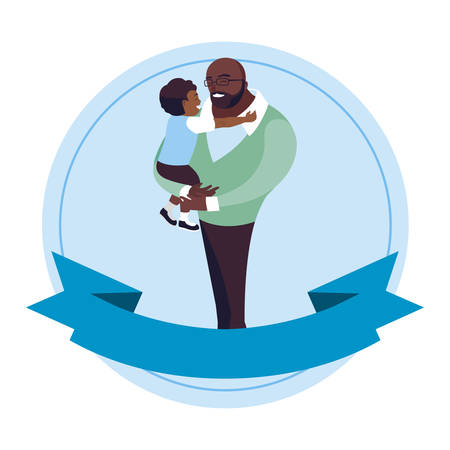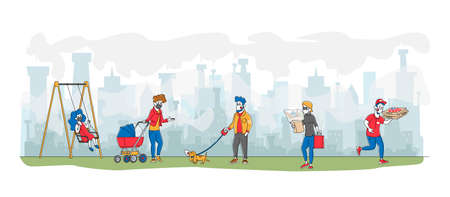1. Why Sustainability Matters for Baby Gear
When it comes to choosing baby gear, especially strollers, many American families are starting to think beyond just style and convenience. Eco-friendly and sustainable choices are becoming more important than ever. But why does sustainability matter when it comes to strollers?
The Environmental Impact of Traditional Strollers
Traditional strollers are often made with plastics, metals, and synthetic fabrics that can take hundreds of years to break down in landfills. The production process for these materials also uses a lot of energy and creates pollution. When millions of families purchase new strollers each year, the environmental impact adds up quickly.
How Eco-Friendly Strollers Make a Difference
Sustainable strollers use recycled materials, organic fabrics, or responsibly sourced components. Some brands design their products for easier recycling or reuse at the end of the strollers life. This reduces waste and lowers the carbon footprint of your baby gear.
Benefits of Choosing Sustainable Strollers
| Benefit | Description |
|---|---|
| Less Waste | Eco-friendly strollers often use recycled or biodegradable materials that reduce landfill buildup. |
| Healthier for Babies | Organic fabrics are free from harmful chemicals, keeping your baby safe. |
| Support Responsible Brands | Your purchase encourages companies to adopt greener practices. |
| Lower Carbon Footprint | Sustainable production methods use less energy and water. |
Making a Difference as an American Family
Every time you choose an eco-friendly stroller, you help set an example for your community and support a healthier planet. By making conscious purchasing decisions, American families play a key role in reducing waste and promoting sustainability for future generations.
2. Key Features of Eco-Friendly Strollers
When youre shopping for a sustainable stroller, its important to know which features truly make a difference for the planet and your family. Let’s explore the main elements that set eco-friendly strollers apart in the U.S. market.
Recycled and Sustainable Materials
Eco-friendly strollers often use recycled plastics, aluminum, or sustainably sourced fabrics. These materials help reduce waste and lower the carbon footprint during production. For example, some brands use fabrics made from recycled water bottles or organic cotton instead of conventional polyester or synthetics.
| Material Type | Eco-Friendly Alternative | Benefits |
|---|---|---|
| Plastic | Recycled Plastics (e.g., PET) | Lowers landfill waste; reduces need for new plastic production |
| Fabric | Organic Cotton, Recycled Polyester | No harmful pesticides; less resource-intensive |
| Metal Frame | Recycled Aluminum | Uses less energy to produce than new aluminum; durable and lightweight |
Non-Toxic Fabrics and Finishes
Sustainable strollers use non-toxic dyes, water-based adhesives, and avoid flame retardants or other harsh chemicals. This ensures your baby isn’t exposed to substances linked with allergies or long-term health concerns.
Common Non-Toxic Certifications:
- OEKO-TEX® Standard 100: Certifies textiles are tested for harmful substances.
- GREENGUARD Gold: Ensures products have low chemical emissions.
- GOTS (Global Organic Textile Standard): Guarantees organic status of textiles, from harvesting to manufacturing.
Eco-Conscious Manufacturing Processes
Sustainable brands often focus on reducing energy consumption, minimizing water usage, and recycling scraps during production. Many companies in the U.S. also prioritize ethical labor practices and shorter supply chains to lower transportation emissions.
Sustainable Practices Table:
| Practice | Description | Why It Matters |
|---|---|---|
| Energy-Efficient Factories | Use renewable energy sources like solar or wind power during manufacturing. | Cuts down greenhouse gas emissions. |
| Water Conservation Systems | Treats and reuses water during textile processing. | Lowers freshwater usage and pollution. |
| Waste Reduction Initiatives | Repurposes fabric scraps and packaging materials. | Keeps more waste out of landfills. |
Popular Certifications in the U.S.
If you want extra assurance, look for strollers with recognized certifications that confirm their green claims. Here are some you’ll see frequently on U.S.-market eco-friendly strollers:
- CPSC Certified: Meets safety standards set by the U.S. Consumer Product Safety Commission.
- CPSIA Compliant: Follows the Consumer Product Safety Improvement Act for children’s products—no phthalates or lead.
- B Corp Certification: Indicates a company meets rigorous social and environmental performance standards.
- BPA-Free & PVC-Free Labels: Shows absence of certain harmful plastics in parts that come into contact with your child.

3. Top Sustainable Stroller Brands Available in the U.S.
If youre searching for a stroller that’s both gentle on the planet and perfect for your family, you’re in luck! American parents have more sustainable and eco-friendly stroller choices than ever before. Many top brands are leading the way by using recycled materials, reducing emissions, and promoting ethical labor practices. Here’s a closer look at some of the most loved sustainable stroller brands and their green initiatives.
Leading Eco-Friendly Stroller Brands
| Brand | Popular Model(s) | Eco-Friendly Features | Social Responsibility |
|---|---|---|---|
| Bumbleride | Indie, Era | Uses recycled PET fabric, PFAS-free water repellent, non-toxic dyes, and lightweight aluminum frames | Committed to fair labor, partners with 1% for the Planet, offsets carbon emissions |
| UPPAbaby | VISTA V2, CRUZ V2 | Recyclable packaging, fabric made with eco-friendly processes, durable design for longevity | Supports family-focused charities and child safety education in the U.S. |
| Bugaboo | Fox 5, Bee 6 | Bio-based plastics, modular designs to reduce waste, long-lasting parts | B Corp Certified, strong focus on ethical manufacturing standards |
| Baby Jogger | City Mini GT2 Eco Collection | Sustainable fabrics made from recycled bottles, lead-free components | Ethical sourcing policies, supports local communities through donations and outreach programs |
| Cybex Green Label | Priam e-Priam (Green Label Editions) | Fabrics made from upcycled ocean plastics, energy-efficient production methods | Promotes global recycling projects and environmental awareness campaigns |
What Makes These Brands Stand Out?
- Sustainable Materials: Many brands use recycled polyester (often from plastic bottles), organic cotton, or plant-based plastics in their strollers.
- Durability: Longer-lasting strollers mean less waste sent to landfills. These models are built to grow with your child or be passed along to others.
- Ethical Production: Top brands focus on safe working conditions and fair pay for workers throughout their supply chains.
- Community Involvement: Several companies donate a portion of profits to environmental causes or support local families in need.
A Few Things to Keep in Mind When Shopping for a Green Stroller:
- Check Certifications: Look for certifications like OEKO-TEX®, GOTS (Global Organic Textile Standard), or B Corp status to confirm eco-credentials.
- Lifestyle Fit: Consider how easy it is to clean fabrics naturally or repair parts rather than replace the whole stroller.
- Resale Value: High-quality sustainable strollers can often be resold or donated when your family is ready for the next stage.
The U.S. market is filled with innovative options that make it easier than ever for parents to choose a stroller thats better for their baby—and the planet!
4. How to Choose the Right Eco-Friendly Stroller for Your Family
Picking a sustainable stroller that fits your family’s needs can feel overwhelming with so many options on the market. Here are some simple tips to help you choose the best eco-friendly stroller, keeping in mind your lifestyle, budget, and what’s available near you.
Consider Your Lifestyle
Think about how you’ll use your stroller most. Do you need something lightweight for city walks or public transportation? Or do you need a sturdy option for hiking and outdoor adventures? Matching your stroller choice with your daily activities helps narrow down the options.
Common Lifestyle Needs and Stroller Features
| Lifestyle | Recommended Feature | Why It Matters |
|---|---|---|
| Urban Living | Lightweight & Compact Fold | Easier to carry, store, and maneuver through crowds or on public transit. |
| Suburban/Outdoor Use | All-Terrain Wheels & Durable Frame | Handles rougher sidewalks, parks, or trails better. |
| Traveling Families | Travel-Friendly Design (folds small) | Fits in car trunks and overhead bins on planes. |
Look for Durability and Materials
A true eco-friendly stroller should last through multiple kids or be easily resold or donated. Check for strong frames (aluminum or recycled materials), non-toxic fabrics (organic cotton, recycled polyester), and easy-to-clean designs. Some brands even offer replaceable parts to extend the stroller’s lifespan.
Compare Price Points
Sustainable strollers can range from budget-friendly to high-end luxury models. Set a realistic budget before you shop. Remember, investing in a durable and eco-friendly model may save money over time since it lasts longer and often has good resale value. Here’s a quick breakdown:
| Price Range (USD) | What You Get | Typical Features |
|---|---|---|
| $150-$300 | Entry-level green models | Bamboo handles, organic fabrics, basic design. |
| $300-$600 | Mid-range strollers | Recycled frames, more features (adjustable seats, larger canopies). |
| $600+ | Premium eco strollers | Sleek design, advanced eco-materials, extra comfort features. |
Check Local Availability and Support Small Businesses
If possible, buy from local stores or U.S.-based brands to reduce shipping emissions and support local businesses. Many cities have baby gear stores that carry eco-friendly options—plus you can see and test the stroller in person before buying.
Quick Tips Checklist:
- Read reviews from other parents in your area.
- Ask about warranty policies and replacement parts.
- Look for certifications like GREENGUARD Gold or OEKO-TEX.
- If buying used, inspect for safety recalls or wear-and-tear.
- Consider if the brand offers trade-in or recycling programs at end-of-life.
5. Caring for and Recycling Your Stroller
How to Extend the Life of Your Stroller
Taking good care of your stroller not only saves money but also helps reduce waste. Here are some easy tips to make your stroller last longer:
- Regular Cleaning: Wipe down frames, wash fabric covers according to the care label, and shake out crumbs.
- Check the Wheels: Remove hair and debris from the wheels. Lubricate them if they get squeaky or stiff.
- Tighten Screws and Bolts: Every few months, check all screws, nuts, and bolts to make sure nothing is loose or missing.
- Store Properly: Keep your stroller in a dry spot away from direct sunlight to prevent fading and rusting.
Choosing Secondhand and Donating
Buying or selling secondhand strollers is a sustainable choice that’s popular across the U.S. Here’s how you can give strollers a second life:
| Option | Where to Look/What to Do | Benefits |
|---|---|---|
| Buy Used | Local Facebook Marketplace, Craigslist, consignment shops, thrift stores, or parent swaps | Saves money, reduces demand for new products |
| Sell/Donate | List online, take to donation centers like Goodwill or Baby2Baby, or pass on to friends/family | Keeps strollers in use, helps other families, reduces landfill waste |
Proper Ways to Recycle When It’s Time for a New Stroller
If your stroller has reached the end of its journey and isn’t safe for another child, recycling is the next best step. Here’s what you can do:
- Check Local Recycling Programs: Some cities have bulky item pickup or recycling days where strollers are accepted.
- Dismantle the Stroller: Remove metal parts (frame), plastic components, and fabric sections so each can be recycled properly.
- Specialty Recycling Centers: Search online for “baby gear recycling near me” or ask at local waste management facilities if they accept strollers.
- Avoid Trash Bins: Tossing a stroller in the garbage should be a last resort—try every option before heading to the landfill!


